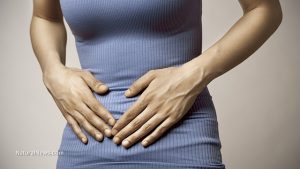
Fibroids – causes, side effects and treatments at NaturalPedia.com
Saturday, March 24, 2018 by Frances Bloomfield
http://www.naturalpedia.com/fibroids-causes-side-effects-and-treatments-at-naturalpedia-com.html

Fibroids are non-cancerous tumors that develop on or within the uterus. Also known as uterine myomas or leiomyomas, fibroids are most often round in shape and are comprised of the same smooth muscle cells that make up the myometrium. Fibroid vary in size, with some being as small as a bean, and others as large as a melon.
The exact cause of fibroids is unknown. However, they tend to develop in women between the ages of 16 to 50 years. According to MedicalNewsToday.com, these are the reproductive years, meaning that estrogen levels are at their peak. Up to 80 percent of women can develop fibroids by the age of 50; though fibroids can also affect 30 percent of 35-year-old women.
There are different kinds of fibroids classified according to their location within or on the uterus. The most common types of fibroids are:
- Intramural fibroids — These are the most common type of fibroid, which appear in the muscle wall of the uterus. Intramural fibroids can cause the uterus to stretch as they grow in size.
- Subserosal fibroids — These are fibroids that develop outside the uterus and inside of the surrounding outer uterine layer, Subserosal fibroids can become pedunculated fibroids, which are fibroids that are attached to the uterine wall by a peduncle or narrow tissue stalk. Like intramural fibroids, they can become large and cause the uterus to appear bigger in one side.
- Submucosal fibroids — Fibroids that develop within the middle muscle layer of the uterus are known are submucosal fibroids.

Known side effects and risk factors of fibroids
Several factors can make a woman more prone to fibroids:
- Age — Women above 30 are at high risk of fibroids.
- Ethnicity — African-American women are more susceptible to fibroids than any other race.
- Pregnancy — Estrogen and progesterone production increases during pregnancy, in turn raising the chances of fibroids.
- Weight — Obese women are predisposed to fibroid formation, particularly if they consume plenty of red meat.
- Family history — Women whose mothers had fibroids are three times more likely to have them.
The symptoms brought on by fibroids vary depending on their location, size, and numbers. Some women may experience little to no symptoms, while others can go through any of the following:
- Anemia
- Constipation
- Dyspareunia or pain during sexual intercourse
- Enlargement or swelling of the abdomen
- Fullness or pressure in the lower abdomen
- Increased urination
- Lower abdomen discomfort
- Lower back pain or leg pain
- Menorrhagia or painful, heavy periods
- Periods with blood clots
- Prolonged menstruation
Body systems harmed by fibroids
Fibroids affect the female reproductive system. In most cases, they won’t cause much else other than the symptoms mentioned above and shrink when a woman hits menopause. However, there are rare cases where fibroids can lead to complications of the reproductive system.
If present during pregnancy, fibroids can bring about pregnancy and labor problems. For instance, a fibroid blocking the vagina will make it necessary for a pregnant woman to undergo a cesarean section instead of giving birth naturally. Fibroids can also increase the risk of premature labor and miscarriages.
Infertility is another issue resulting from the presence of fibroids. There have been cases where fibroids block the Fallopian tube and make it harder to get pregnant. Though rare, fibroids have been known to prevent a fertilized egg from attaching itself to uterine lining, or even keeping sperm from reaching the egg.
Food items or nutrients that may prevent fibroids
According to Natural-Fertility-Info.com, fiber is one of the best nutrients for preventing fibroids. This is because fiber can help get rid of excessive estrogen. Quinoa, chia seeds, dark leafy greens, and whole grains are excellent fiber sources that every woman should include in her diet.
Women who already have fibroids should aim to consume more foods that possess anti-inflammatory properties. Fruits, vegetables, lentils, and beans can all fight inflammation in their own ways. Additionally, these foods tend to have low glycemic index (GI) numbers and therefore have little impact on blood sugar levels. Foods with high GI numbers are known to cause inflammation, so opting for low GI foods is a must for women who have fibroids.
Treatments, management plans for fibroids
There are numerous treatment options available, but the first line of treatment is usually medication. The medication prescribed for fibroids is most often meant to regulate hormones, which in turn causes the fibroids to shrink. This is the primary mechanism behind gonadotropin-releasing hormone (GnRH) agonists like Luprone. Other medications won’t shrink fibroids or eliminate them. These medicines can, however, help control the pain and bleeding that occurs during menstruation.
Fibroids can be surgically removed through a process known as an myomectomy. For more severe fibroid cases, a hysterectomy may be the only option. Though this means that childbearing will not be possible in the future.
Women can also choose from minimally invasive procedures such as endometrial ablation (wherein a special instrument is inserted into the uterus to destroy the lining) and uterine artery embolization (wherein particles are injected into the uterus to cut off the blood supply of the fibroids).
Where to learn more
- Fibroids: The Condition Every Woman Should Know About
- How to Prevent and Eliminate Fibroids Naturally
- Lifestyle Changes will Help Endometriosis and Fibroids
- Natural Solutions Help Uterine Fibroids
- Uterine Fibroids and vaginal infections
Summary
Fibroids are abnormal, non-cancerous growths that can develop anywhere on or in the uterus. They usually develop in women between 16 to 50, but can disappear during menopause.
Women who have fibroids can experience no symptoms, or serious ones like heavy periods with blood clots, frequent urination, and pain during intercourse.
Treating fibroids entails taking prescribed medication, or going through surgery or minimally invasive procedures.
Sources include:
Tagged Under: Tags: Fribroids





